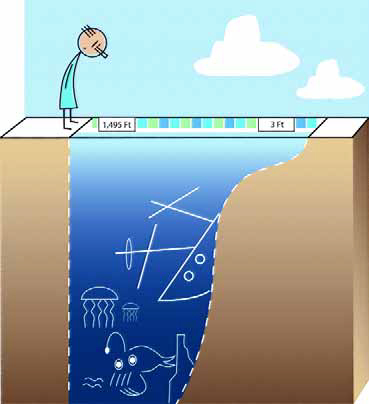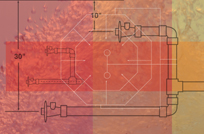Pools & Spas
It's a tale of two visions. One contingent in the family wanted a formal, architectural pool that would reflect the geometry of the home. The other wanted to borrow the natural look of the lake and rock formations that flowed down the sloping backyard. Such divergent themes are generally difficult to blend into a coherent design, but I managed to do it with a little help from some friends. The project, which involves placing a formal, geometric pool atop a formation of artificial rock that looms over a grotto and lagoon-like pool below, is still under construction at this writing. At this point, I'd have to say that the results should be just as spectacular as the design process was arduous. My company is based in Raleigh, N.C., which, although it is hardly a backwater, is not exactly at the epicenter of watershape design or construction expertise. To integrate this diverse clutch of elements, I felt a need to
It's a tale of two visions. One contingent in the family wanted a formal, architectural pool that would reflect the geometry of the home. The other wanted to borrow the natural look of the lake and rock formations that flowed down the sloping backyard. Such divergent themes are generally difficult to blend into a coherent design, but I managed to do it with a little help from some friends. The project, which involves placing a formal, geometric pool atop a formation of artificial rock that looms over a grotto and lagoon-like pool below, is still under construction at this writing. At this point, I'd have to say that the results should be just as spectacular as the design process was arduous. My company is based in Raleigh, N.C., which, although it is hardly a backwater, is not exactly at the epicenter of watershape design or construction expertise. To integrate this diverse clutch of elements, I felt a need to
The art of watershaping so often is all about the art of finishing. Certainly, every stage of any project is important, but the final steps leading to completion are what make most designs come to life. The project pictured here, which I've covered in five of my "Details" columns during the past couple years, has been an undertaking of extraordinary scale and mammoth complexity. As I mentioned frequently in those columns (November 2003, January and February 2004 and January and February 2005), the lion's share of the project management fell to my east coast partner and dear friend Kevin Fleming, who truly has endured a baptism of Tisherman-style fire as he
The art of watershaping so often is all about the art of finishing. Certainly, every stage of any project is important, but the final steps leading to completion are what make most designs come to life. The project pictured here, which I've covered in five of my "Details" columns during the past couple years, has been an undertaking of extraordinary scale and mammoth complexity. As I mentioned frequently in those columns (November 2003, January and February 2004 and January and February 2005), the lion's share of the project management fell to my east coast partner and dear friend Kevin Fleming, who truly has endured a baptism of Tisherman-style fire as he
A big part of properly designing watershapes to meet specific client needs has to do with understanding how they'll be using the body of water. I always explore this issue with my clients, which is why, for the most part, I don't do many pools with traditional deep ends - despite the fact that, for decades, most pools have been built with them. To me, in fact, the whole concept of deep water in residential swimming pools is basically misguided and largely obsolete. Consider exactly what it is that bathers can do in the deep end of a pool: They might dive, tread water or swim to the bottom to retrieve coins or pool toys - and, unfortunately, they can drown there, too. Yes, people also drown in shallow water, but there's no doubt that deeper waters provide
A big part of properly designing watershapes to meet specific client needs has to do with understanding how they'll be using the body of water. I always explore this issue with my clients, which is why, for the most part, I don't do many pools with traditional deep ends - despite the fact that, for decades, most pools have been built with them. To me, in fact, the whole concept of deep water in residential swimming pools is basically misguided and largely obsolete. Consider exactly what it is that bathers can do in the deep end of a pool: They might dive, tread water or swim to the bottom to retrieve coins or pool toys - and, unfortunately, they can drown there, too. Yes, people also drown in shallow water, but there's no doubt that deeper waters provide
In Costa Rica, the people have a saying, pura vida, which in English roughly translates to "pure life." We also are known to say, cual es el apuro, which means, "What's the hurry?" Those two unofficial national slogans reflect the essence of life in this country, where relaxation, an appreciation of natural beauty, love of family and a peaceful spirit are defining characteristics for the society. But even in a place like Costa Rica, where the pace of life is slow, relaxed and easy, timing is still everything. About three years ago, it occurred to me that a variety of social and economic factors were creating a watershape market in Costa Rica in which a truly high-end, quality-oriented custom company could become quite successful. Those factors - Costa Rica's rising profile as
As watershapes have become increasingly complex, the need for reliable hydraulic designs that maximize efficiency and reliability is now more pressing than it’s ever been, says hydraulics expert Steve Gutai. With this installment of his ongoing series on hydraulics, he launches a sequence of articles that will explore principles behind the fluid mechanics and hydraulics of custom
My last two "Details" should make it pretty clear that I'm more enthusiastic about tile than I am about any other surface material for watershapes. In October, we covered the use of color while focusing on tile, and in November there was a discussion of my favorite suppliers and their distinctions. This time, I'll bring the sequence to a conclusion by looking at the process of selecting tile and at the ways I blend tile mosaics. My enthusiasm extends from the fact that tile in watershapes is incredibly dynamic - so visually flexible, so durable and, if done well, so elegant. It can be used either as a


















